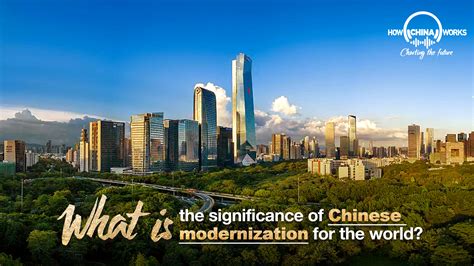China’s modernization efforts, spanning over a century, have been marked by both successes and setbacks. While the country has made significant progress in certain areas, its modernization has been hampered by a number of challenges that have prevented it from fully realizing its potential.

Obstacles to Economic Development
One of the primary reasons for the shortcomings of China’s modernization is the country’s economic challenges. The Chinese economy, while large and growing, faces several obstacles to sustained growth.
1. High Inequality
China has one of the highest levels of income inequality in the world, with the gap between the rich and poor widening in recent years. This inequality has led to social unrest and has made it difficult for the government to implement policies that benefit all citizens.
2. State Control of the Economy
The Chinese government maintains significant control over the economy, which has stifled innovation and entrepreneurship. State-owned enterprises (SOEs) dominate many sectors of the economy, and competition is often restricted. This has led to inefficiency and a lack of dynamism in the economy.
3. Weak Rule of Law
The rule of law is weak in China, which creates uncertainty for businesses and investors. This has made it difficult for the country to attract foreign investment and has hindered the development of a strong private sector.
Political Hindrances
China’s political system has also posed significant barriers to modernization. The country’s authoritarian government has suppressed dissent and limited the participation of citizens in the political process.
1. Authoritarian Rule
China is ruled by the Chinese Communist Party (CCP), which has maintained a tight grip on power for over seven decades. The CCP has suppressed dissent and has limited the freedom of speech and assembly. This has created a climate of fear and has prevented the development of a vibrant civil society.
2. Lack of Political Reform
The CCP has resisted calls for political reform, which has led to a lack of accountability and transparency in government. This has resulted in corruption and has made it difficult for the government to address the challenges facing the country.
Social and Cultural Challenges
In addition to economic and political obstacles, China’s modernization has also been hindered by social and cultural challenges.
1. Traditional Values
Traditional Chinese values emphasize collectivism and obedience to authority. This has made it difficult for China to adapt to the demands of a modern, industrialized society.
2. Lack of Education
China’s education system, while improving, still faces challenges. The quality of education varies widely, and there is a shortage of skilled workers. This has made it difficult for the country to compete in the global economy.
3. Rural-Urban Divide
China has a large rural-urban divide, with significant differences in income, education, and access to services between urban and rural areas. This divide has contributed to social unrest and has made it difficult for the government to implement policies that benefit all citizens.
Failure to Achieve Modernization Goals
Despite the challenges it has faced, China has made significant progress in certain areas of modernization. However, the country has yet to fully achieve the goals it set out for itself over a century ago.
1. Economic Growth
China has achieved rapid economic growth in recent decades, becoming the world’s second-largest economy. However, this growth has been uneven and has not benefited all citizens.
2. Infrastructure Development
China has invested heavily in infrastructure development, building roads, railways, and airports. However, the quality of infrastructure varies widely, and there is a need for further investment.
3. Education
China has made progress in improving its education system, but there is still a shortage of skilled workers. The quality of education also varies widely, and there is a need for further reforms.
Conclusion
China’s modernization efforts have been hampered by a number of challenges, including economic inequality, state control of the economy, weak rule of law, authoritarian rule, lack of political reform, traditional values, lack of education, and rural-urban divide. These challenges have prevented China from fully realizing its potential and have made it difficult for the country to achieve its modernization goals.
While China has made significant progress in certain areas, such as economic growth and infrastructure development, it still faces significant challenges. To fully achieve its modernization goals, China will need to address these challenges and implement reforms that promote economic growth, political openness, and social equity.
